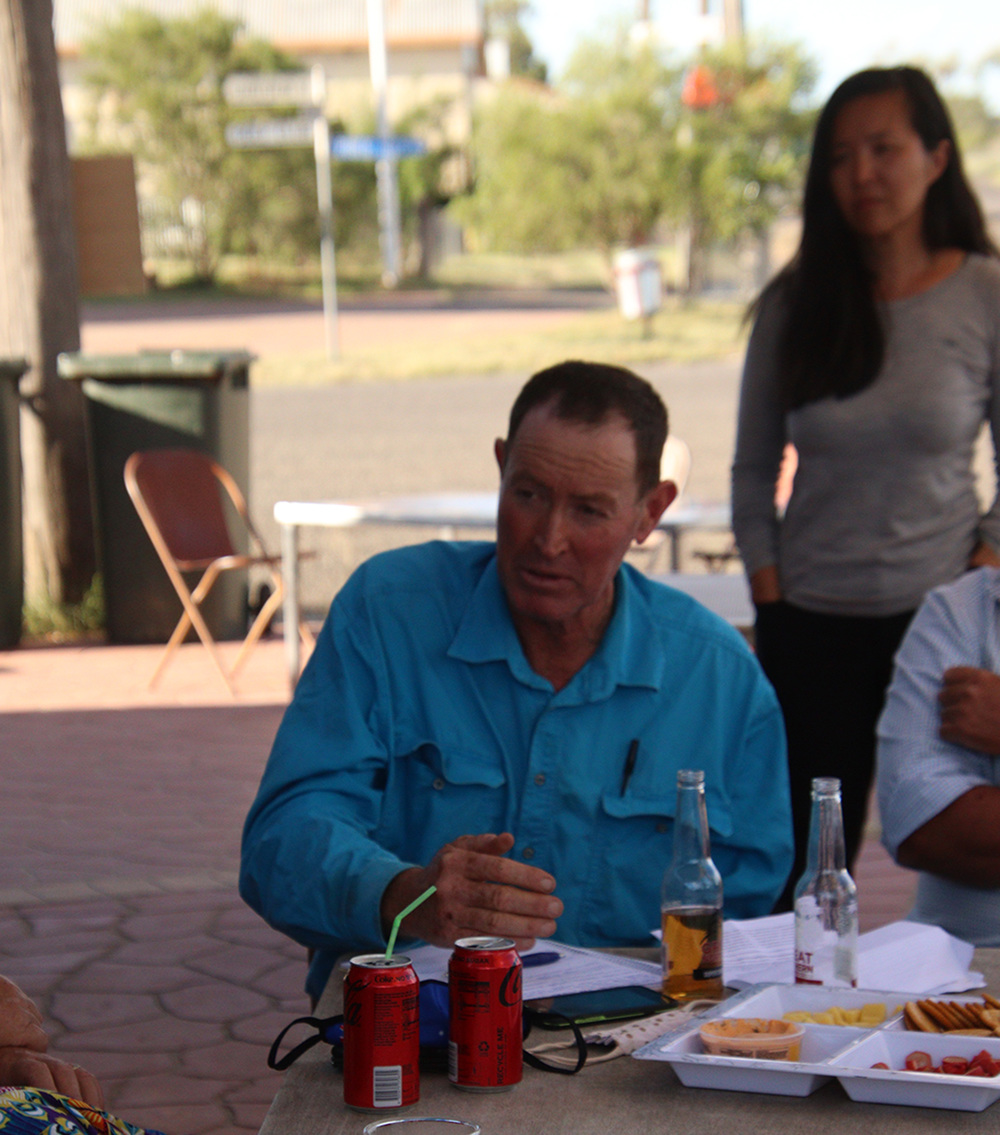Carinda community's frank feedback
Lee O'Connor
23 February 2022, 6:30 AM
 Landholders along the Lower Macquarie met with scientists and representatives from Water Infrastructure NSW in Carinda this month to discuss the proposed Gin Gin Weir project.
Landholders along the Lower Macquarie met with scientists and representatives from Water Infrastructure NSW in Carinda this month to discuss the proposed Gin Gin Weir project.AROUND twenty local landholders attended an informal meeting with representatives of Water Infrastructure NSW (WINSW) and visiting scientists earlier this month on Thursday 10 February at the Carinda Hotel and gave wide-ranging and frank feedback on the expected impact of the proposed Gin Gin Weir on the Macquarie Marshes.
While generations of landowners along the Macquarie River have grappled with the hot topic of water regulation, Water Infrastructure NSW is a relative newcomer to the table, established in late 2019 and placed in charge of the planning and delivery of around $4billion worth of critical water-related projects over the next ten years.
In 2018 the State Infrastructure Strategy 2018-2038 identified the Macquarie River catchment as one of the three highest priority inland river catchments facing the most significant water management challenges in NSW.
Under discussion at Carinda was the Macquarie River Re-regulating Storage Project (renamed the Macquarie-Wambuul Water Security Project) that has been in the pipeline since 2015/16.
The site for the proposed works is on the Macquarie River downstream of the existing Gin Gin Weir, approximately 18km north east of Trangie.
The project is still in the final business case stage and WINSW is now leading a process which includes a review of the project's objectives and options for the project's delivery.
"We're not here to put cement in the ground as soon as possible, we're here to assess all the options," said Project Manager Matt Batman.
The Carinda locals were clearly skeptical about the planning process but welcomed WINSW as a body not bound to serve the interests of bulk water users.
Those attending questioned much of the data underpinning the project's planning and urged the government representatives to take a "holistic view" of the Macquarie Castlereagh Valley.
However the bottom line remains clear for those in the unregulated section of the Macquarie River.
"Are we going to continue to get flows in the Lower Macquarie after this project?" asked Judy Masman. "We have river frontage. We want the river to run."
“We 100% object to the statement that the weir will enhance the water security of the Macquarie Valley,” said Quambone landowner Dugald Bucknell, referring to the price paid by downstream communities.
Many of those attending questioned why the security of upstream users was such a high priority while communities down river were regularly consulted but rarely figured in the final results.
They requested that more attention be given to the socio economic impacts of regulatory activities on the wider region including production, Aboriginal cultural activities, property values and population.
"Since 1967 when the dam (Burrendong) went in, 65% of houses with marsh country have been abandoned," long-term resident Peter McLellan said. "We have that information but it's never been used."
"This community is particularly well-informed on this subject," President of Macquarie Marshes Environmental Landholders Association Garry Hall told Mr Batman.

ABOVE: Local representatives like Garry Hall from the Macquarie Marshes Environmental Landholders Association were frank in their feedback on how previous government river management approaches hadn't worked.
"Basic landholder rights to water shouldn't vary depending where you are in the system, but we have been failed by river management during the Millenium Drought and the 2017-19 drought.
"That's why this community is so on-edge about re-regulating weirs, because we've been done over at every level."
Three WINSW staff were accompanied by fish ecologist Dr Martin Mallon Cooper and veteran hydrologist and river system modeller Darren Barma, who found plenty of common ground with those who live in the Marshes' backyard.
As well as business and community impacts, the group discussed the fallout of river regulation on fish, frogs, birds, mussels, turtles and the demise of the Darling River snail.
"Fish need flow, they need base flows and peak flows," Dr Mallen-Cooper said.
"Of all the northern NSW rivers in the Federation drought, this was the only one that kept flowing."
"We have the knowledge to restore and maintain it," he said.
"We can manage this better. The goal is to have base flows and no zero flow," he said.
"From your point of view [those downstream], there's no upside to a re-regulated weir," said Mr Barma.
"There's only so much this project can do but at a minimum it should not make things worse."
A spokesperson for WINSW said the new department and the NSW Government collaborate across the water sector with industry partners and stakeholders, including Local Water Utilities and Local Councils, to deliver water management solutions that support the health and well-being of residents.
“Building and maintaining respectful, trusted and collaborative relationships with communities and stakeholders underpins all the work we do to ensure water infrastructure projects achieve the best possible outcomes,” the spokesperson said.
An official community meeting is due to be held in Carinda next month to progress the planning on the project.




